A 2-year initiative to unify design foundations and launch a payments platform that grew to $30M/month in processing volume.
Project Overview
Invoice Simple is the highest-rated invoicing app for freelancers, contractors, creatives, and small business owners.
This work highlights my ability to combine research, prototyping, UX/UI design, and product strategy to deliver both user and business value.


My Role
Principal Product Designer and Product Manager
I helped lay the foundation for this transformation. I began as a product designer and grew into the strategic driver of innovation, defining the platform’s vision, building scalable systems, and leading cross-functional teams. The work positioned SKIO not just as another app, but as a long-term reimagining of how the music industry could operate.
THE PROBLEM
How to scale Invoice Simple beyond invoicing, delivering a seamless payments solution that drives adoption and measurable growth?
THE TEAM
3 developers, SaaS vendors, executive stakeholders
MY METHODS
Competitive analysis, user research, usability testing, prototyping, flow testing, verification testing
THE RESULT
A solution that converted 80,000 users and scaled to $30M monthly processing and annual $5M revenue
Design System Foundation
The app’s UI was inconsistent, with duplicated elements and accessibility gaps. This slowed development and created friction for users.
I led a full audit, cataloging inconsistencies and identifying bottlenecks in developer workflows. I then built a modular design system in Figma, including a component library, style guides, and accessibility standards.

Design System
I built a component-based system unifying dozens of entities
(profiles, wallets, projects, contracts) into one consistent framework
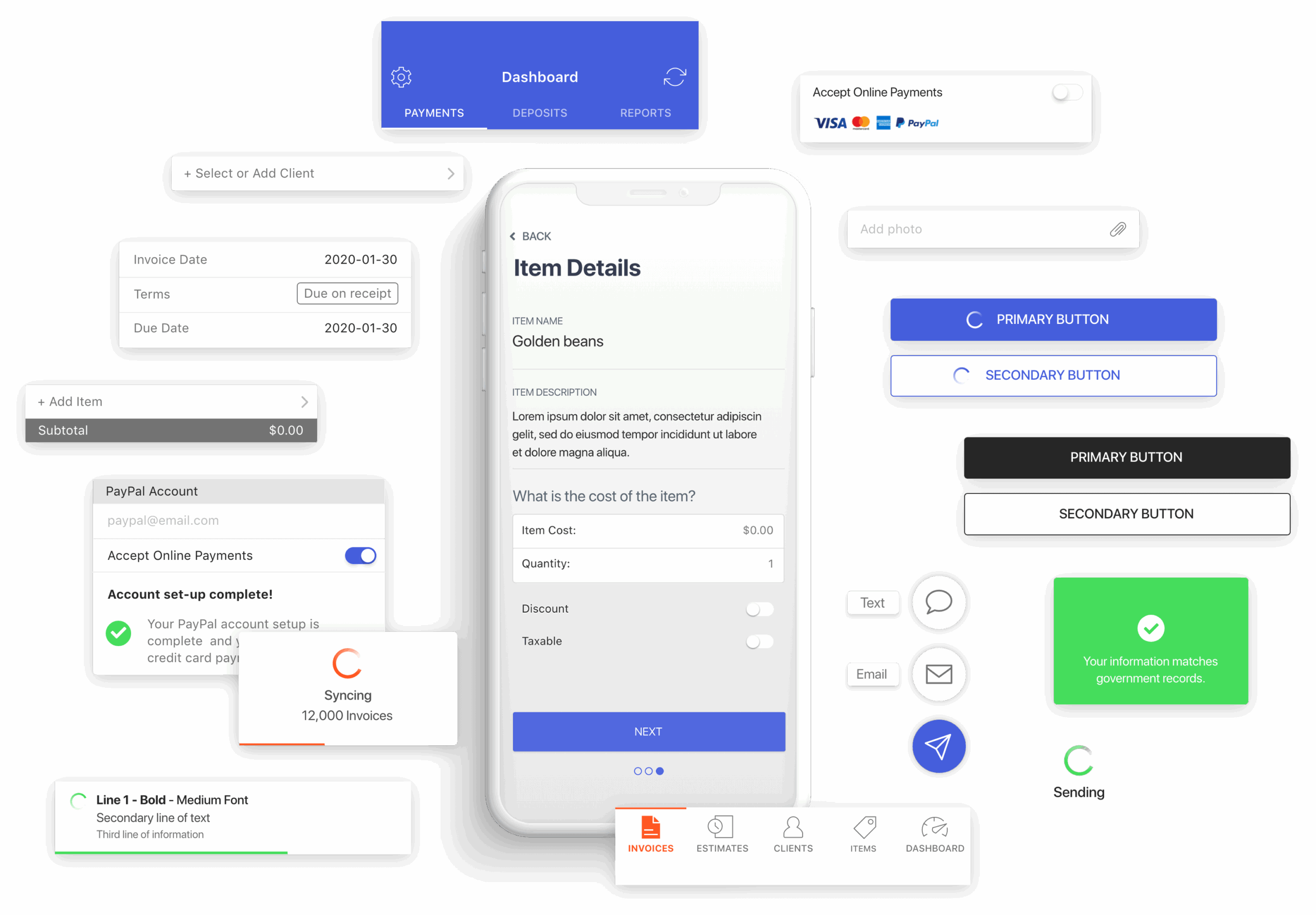
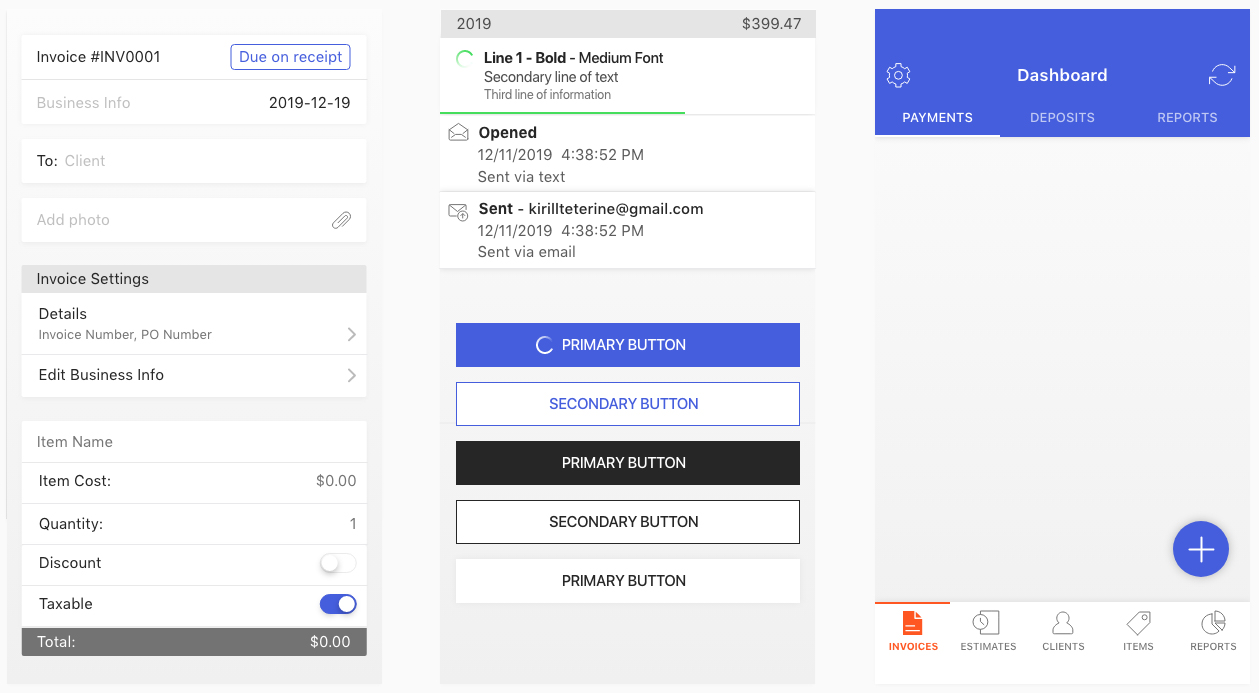
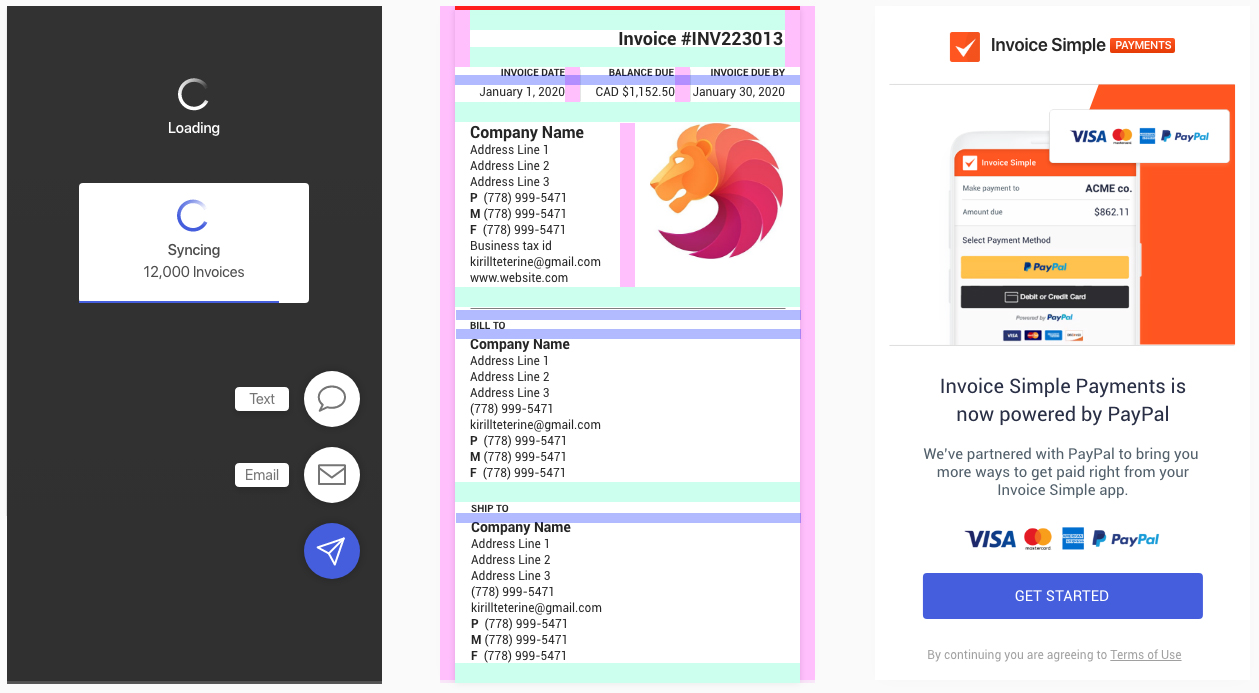
Payments Solution
Challenge: The existing third-party payment integration had poor approval rates, confusing checkout flows, and little visibility into user drop-offs.
Solution: I rebuilt onboarding flows internally, integrated address verification and KYC checks, and redesigned the checkout for clarity. This gave us full control of the experience, reduced friction, and scaled the solution successfully.
Onboarding Flow
I began with research and data analysis to uncover where users dropped off and why. I validated findings with user research and workshops, then prioritized improvements that had both user and business impact.
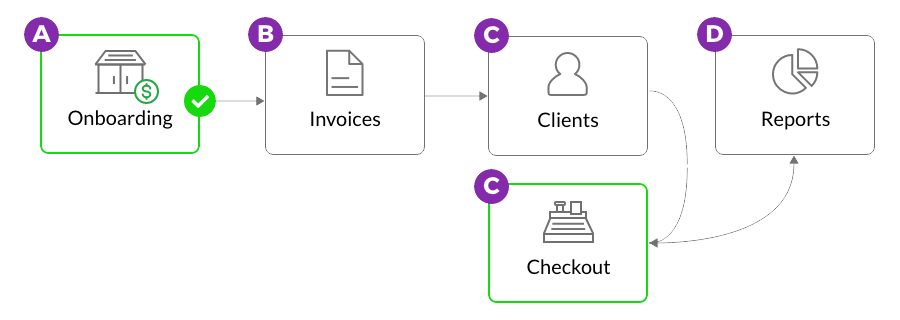

The Drop Offs
I identified the main drop off areas and started looking at assumptions and solutions for the issues
A) Personal Info – 80% of the user base are sole proprietors, and don’t require 2/3 of the business information
B) Business Info – 20% of the user base, by solving C and A, this should
C) Instant Approval – if a user is not approved within 10 minutes, they get a bad experience and are entered into a manual verification queue
D) Total Approval Rate – by solving C, A, and B, this metric would improve
User's Address
A user needs to match at least 8 out of 10 of personal data points with information that is on file with business registry record in order to be auto approved. Data analysis showed common reasons for failure. Most of those points are within the user’s address – street city, state, and zip code. This was due to spelling mistakes and typos, wrong address or format or that registry data on file is different. I made a quick decision to implement auto verification for address verification by using a Google maps search solution. The results presented great success with minimal development efforts.
Before
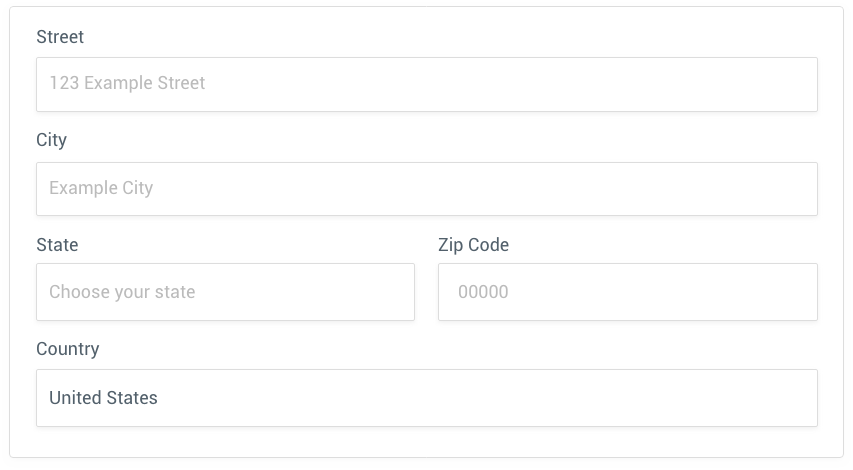
After

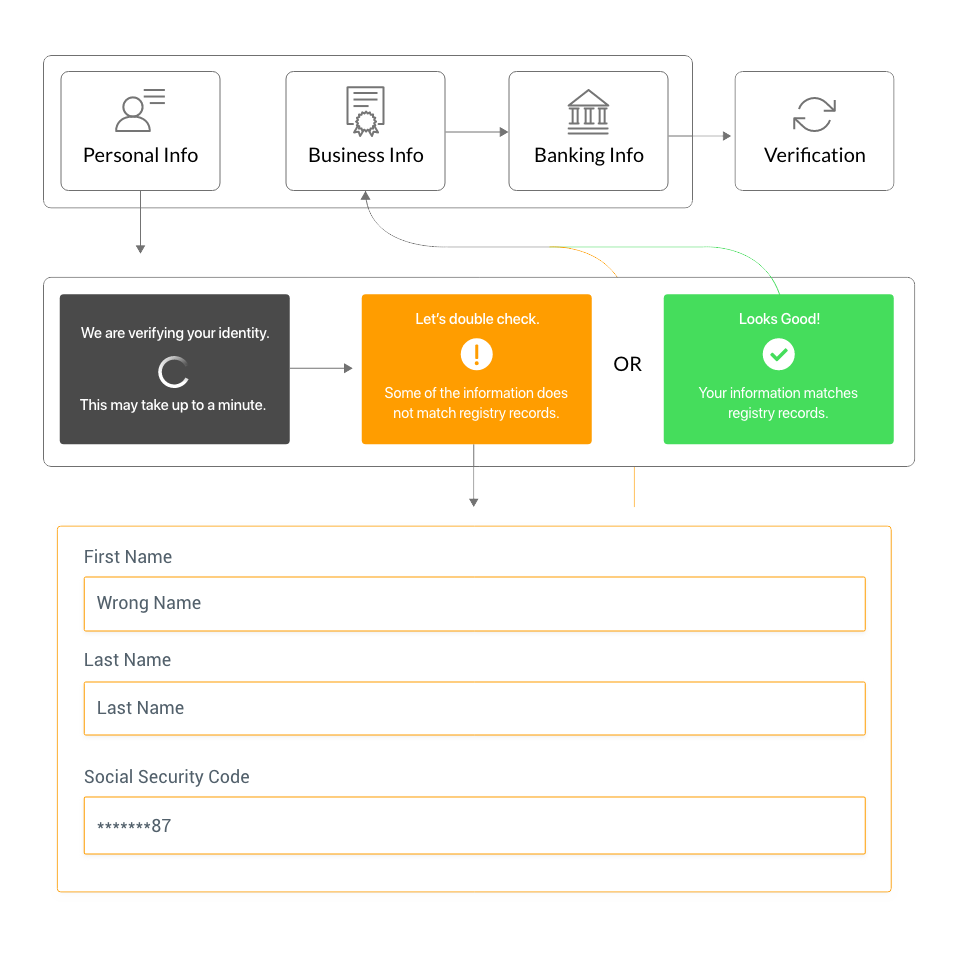
KYC Implementation
I identified a third-party solution for pre-submission information verification, known as KYC, allowing users to rectify any discrepancies before submission to partners. To validate this approach, I compiled a list of 100 users who weren’t immediately approved. By engaging the KYC provider to compare submitted data against stored data, we identified mismatches. The integration of KYC into the flow yielded outstanding results.
Checkout
With the onboarding flow in place, I turned to improving the checkout process. Although it was an out-of-the-box solution, my experience with onboarding suggested we could enhance it.
User surveys, interviews, and research revealed that the checkout page was confusing; users thought PayPal was the only option. I rearranged and custom-styled the buttons to make other payment options more visible. This change increased checkout rates within 48 conversions by 9%.
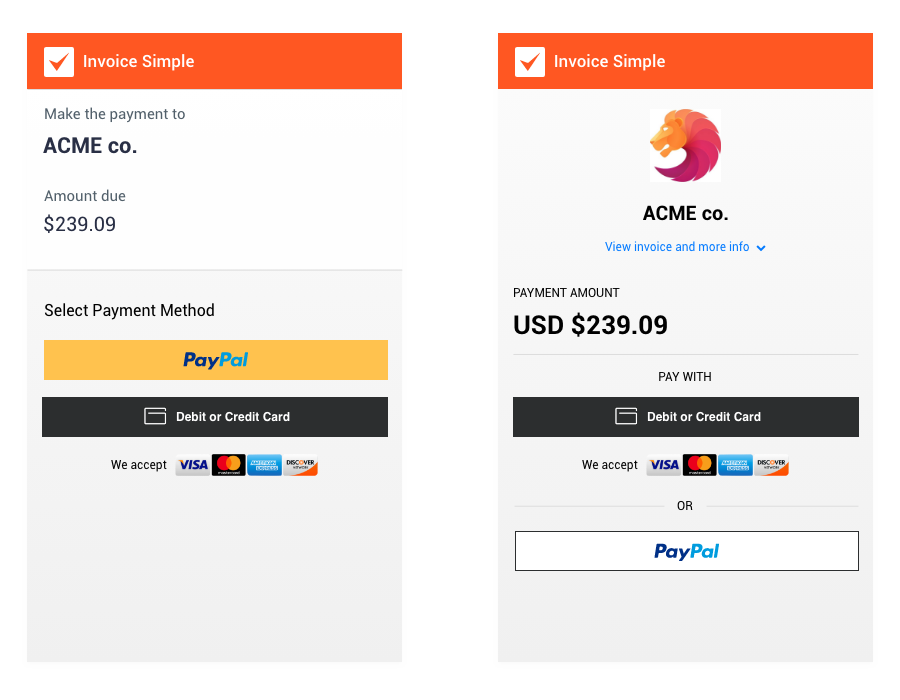

UX Design Process
I led the process from early flows to launch, validating assumptions through testing and iterating based on results.
Flows
Simplified onboarding for sole proprietors by removing unnecessary steps.
Prototypes & Wireframes
Built and tested interactive flows for onboarding and checkout.
Address Verification
Rebuilt internal form with field-level tracking, raising instant approvals from 73% → 79%.
KYC Integration
Added pre-verification, improving instant approvals to 88% and total approvals to 93%.
Checkout Redesign
Restyled buttons and clarified hierarchy, increasing conversions by 9%.
Design System Support
Ensured all flows followed consistent, accessible UI patterns for long-term scalability.
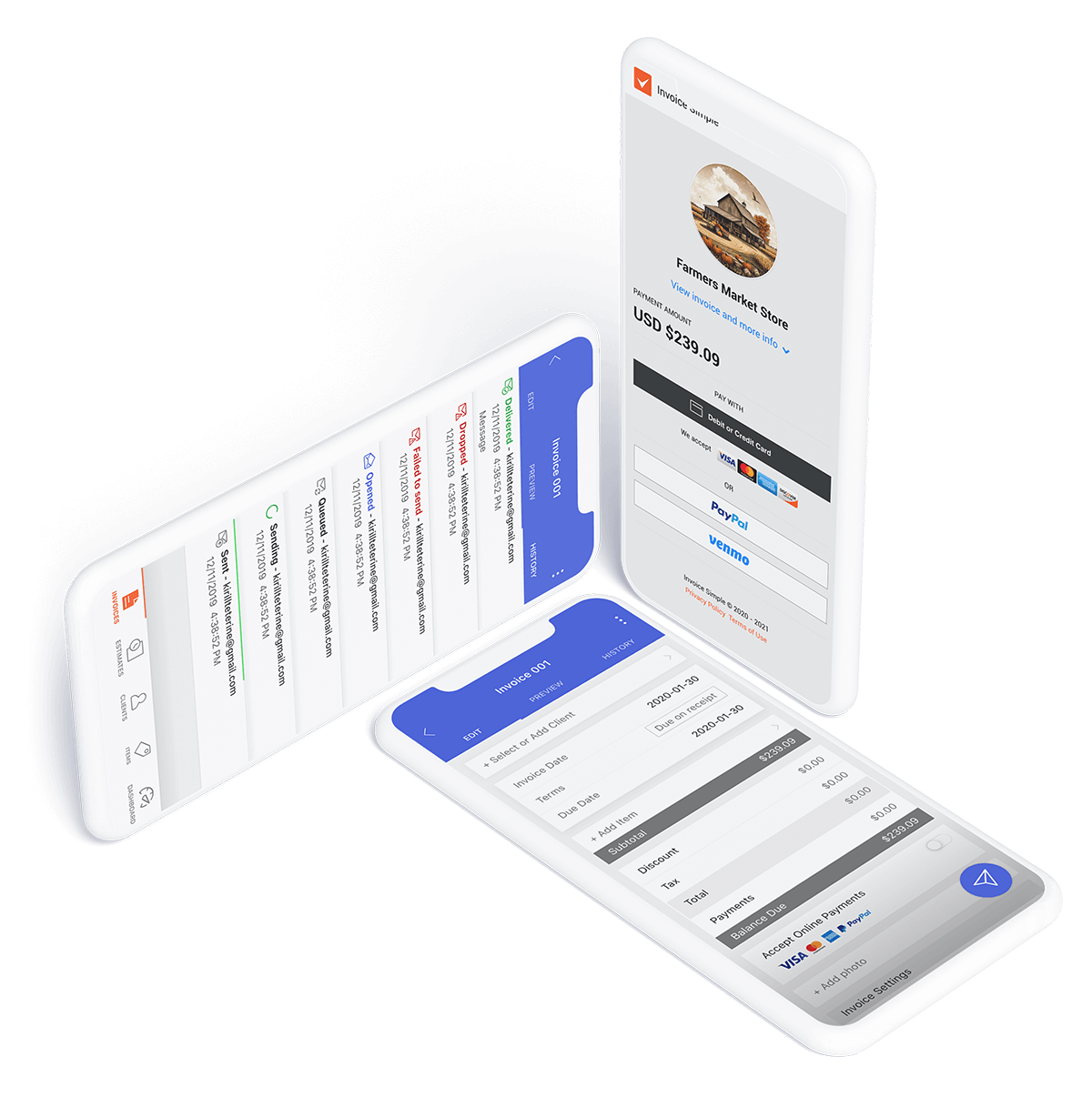
Impact & Results
This project taught me how UX research, prototyping, and strategy can deliver measurable business impact.
The payments solution transformed Invoice Simple from a simple invoicing tool into a revenue-driving payments platform, and lead to an acquisition from Evercommerce.

I’ve had the pleasure to work with Kirill. He is smart, dedicated, and creative. All qualities you need in a great product manager.
He always strived to keep us on track, and made sure we had everything we needed to get the job done.
His leadership of the payments team at invoice Simple was a key role in the success that we achieved, and I know that he is going to be a great asset to any team he joins.
Omar M. Khashab
Senior Backend Engineer
